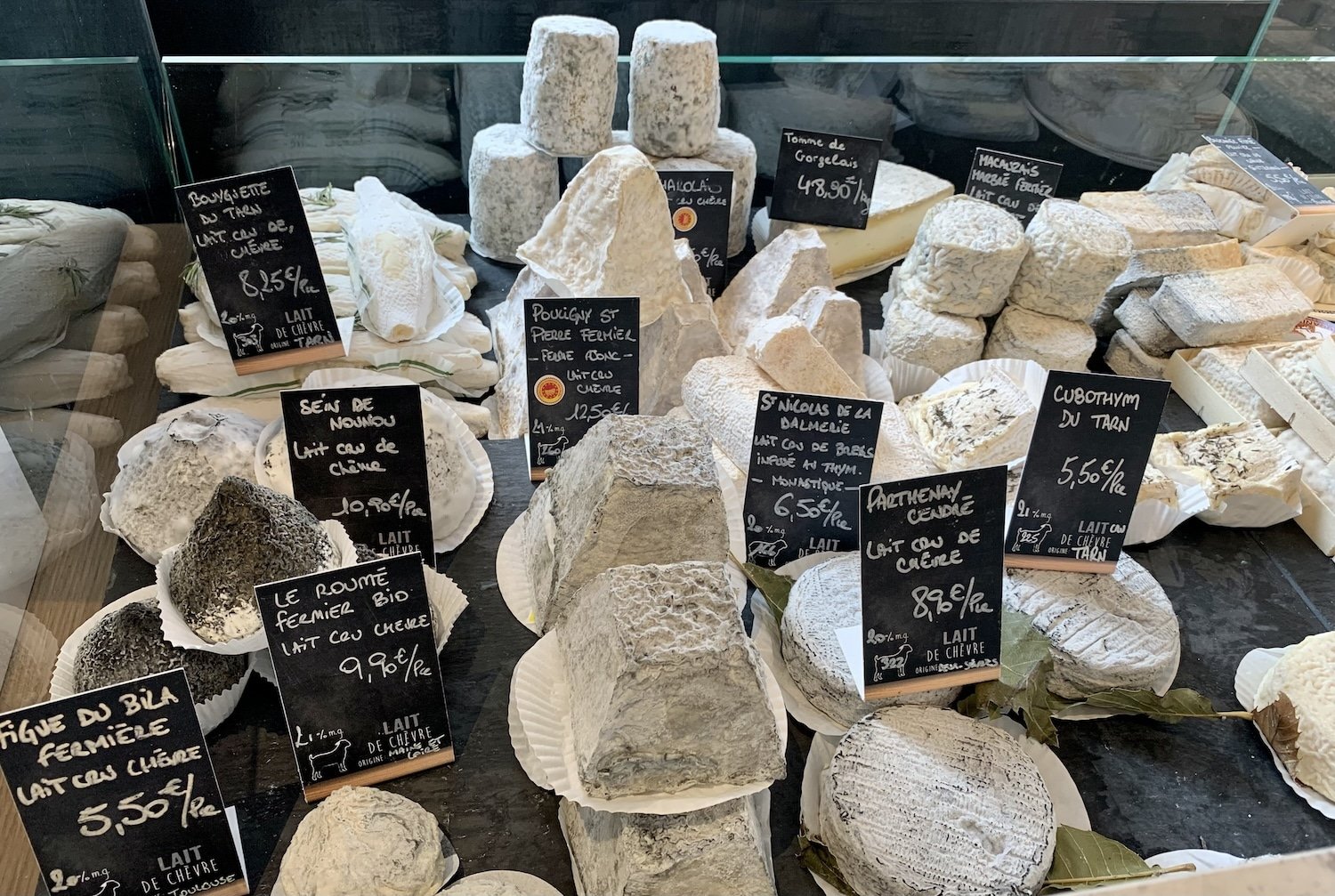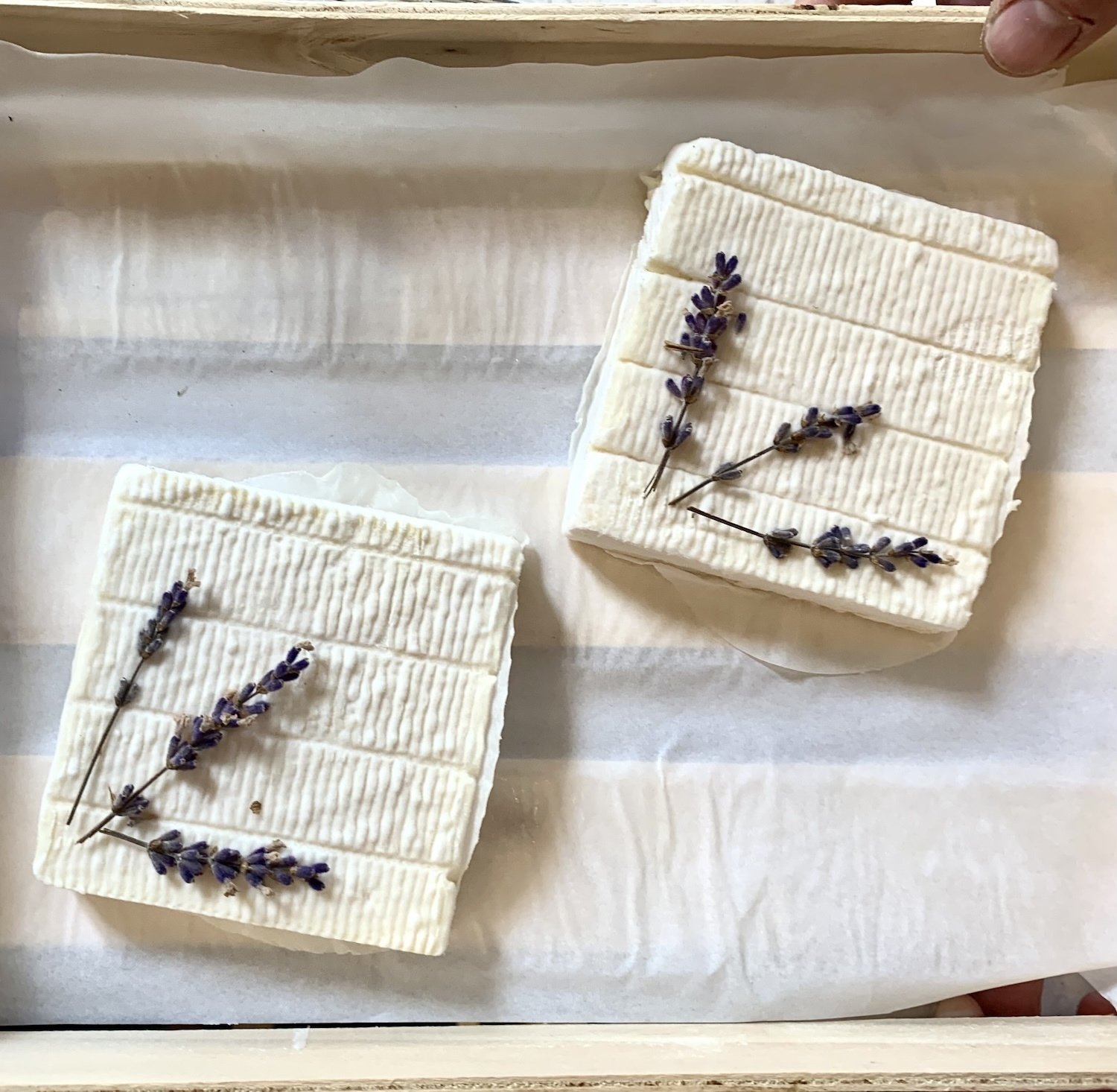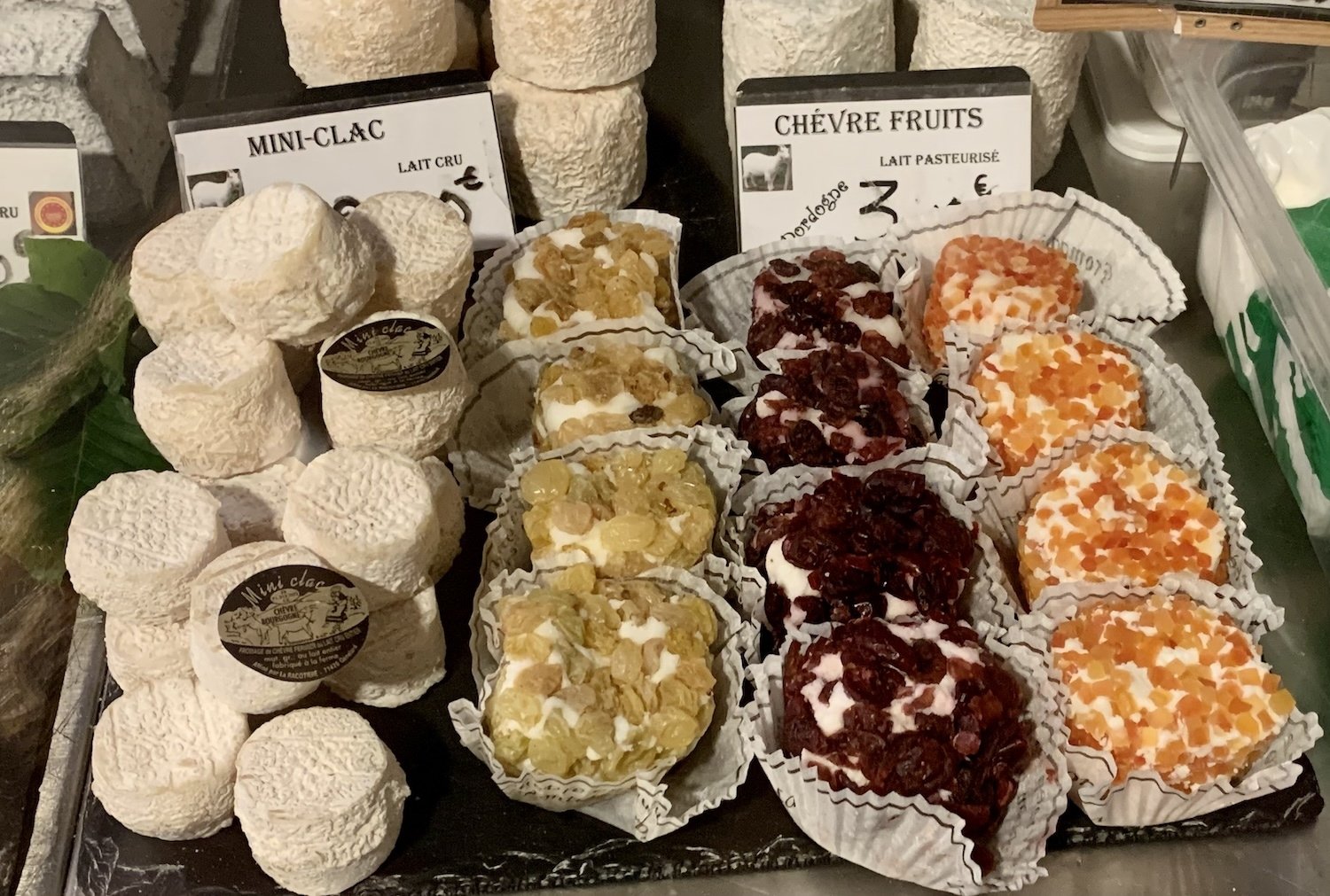5 Parisian Cheese Shops for Great Chèvre
If, like me, you are an amateur de chèvre (goat cheese lover), spring and early summer are the times to head to France to satisfy your cravings with an array of classic and creative chèvres.
Jennifer Greco and Alexandre Gayral photo credit Anna Mindess
My guide for exploring goat cheese was Jennifer Greco (aka chezloulou) a French cheese expert who has lived in France for 21 years, teaches brilliant classes about a wide range of French fromage and is a Cheese Professor contributor. Greco explains what makes a good cheese shop, as “A place that has a nice variety and staff that are well trained. I like it when they work with the seasons and when they have unusual things. There are a few places that work directly with farmers and small producers, so they get exclusivity. You’ll find cheese at their shops, that you won’t find in other stores.”
I happened to be in Paris in June and Greco informed me I was lucky because that is the perfect season for chèvre-tasting, “Goats get pregnant between September and November, and when they are pregnant, unless you continue to milk them, they will naturally stop producing milk for two months. Lots of small producers and farmers just don’t make goat cheese in the winter. They’ll give their goats the time off. Also, often in the winter, the goats are indoors where it is warm, eating dried straw and hay, so the milk isn’t as sweet as if they were eating fresh clover, grasses, and flowers. When spring arrives, they go back outside, their babies are born, their milk is full of fat and protein and they are eating all the fresh grasses, so their milk is really sweet and rich and that’s when goat cheese season really kicks off.” Read more about the seasonality of cheese.
Chez Alexandre Fromagerie
A multitude of chevres at Chez Alexandre by Anna Mindess
At Chez Alexandre Fromagerie fromager Alexandre Gayral helped us select a few chèvres from his large collection and Greco pointed out some of her favorites: a raw goat's milk cheese called Mont Ventoux is named after a mountain in Provence and looks like little pointy peaks. Le Gabarre another raw goat's milk cheese is unusual because it’s large, while most goat cheeses are quite small. It is also boat-shaped and named after flat bottomed boats that transported merchandise in the Loire River. The farmers would put their goats on these boats and take them to islands in the river so they could eat all the fresh grasses there.
Saint Dominin at Chez Alexandre by Anna Mindess
Saint Dominin is made by a couple who only have 250 goats. They named this cheese after an ancient church that sits on their land and they adorn it with lavender sprigs. The lavender honors the area where the goats are living, which is dry and rocky, with no pastureland. So, they roam freely and eat whatever they can find, lavender, wild winter savory, wild thyme, rosemary, oregano, wild fennel and garlic. At about 10 days old, the cheese is very fresh and fluffy. I tasted it and it was both light and deeply satisfying.
Fromagerie Sanders
Fromagerie Sanders photo credit Anna Mindess
Fromagerie Sanders is in the covered Saint Germain market and owned by a couple, Twiggy and Michel Sanders. They provide many restaurants with cheese and do a little affinage. The Sanders are very much connected to the producers. They used to spend every August driving around France, going to talk to the farmers they deal with, trying to find new cheeses, and meet new farmers.
Sanders Nanny's breast photo credit Anna Mindess
Greco shows me a pointy cheese covered with ash, called Sein de Nounou, which translates as “Nanny’s Breast.” She explains that there are hundreds of people making goat cheese in France, and many have come up with unusual shapes to attract the eye of the consumer. There are four-leaf clovers, stars, hearts and diamonds, one has the shape of the Eiffel Tower and another the Arc de Triomphe. It seems like it is only goat cheese that gets made in traditional flavors, but with these creative names and shapes.
Sanders Chevre Fruits photo credit Anna Mindess
I spotted fresh chèvres rolled in dried fruits, like raisins, cranberries and apricots. I loved the one rolled in cranberries.
Fromagerie Laurent Dubois
Laurent Dubois photo credit Anna Mindess
Laurent Dubois of Fromagerie Laurent Dubois is one of a very select group, the 26 Meilleurs Ouvriers de France (MOF) in the cheese category. Greco explains that traditional craftspeople and food makers of ice cream, bread, and chocolate, can earn the honor of being named “best craftsperson.” For the intense competition in the cheese category, Dubois was not required to make cheese, but to demonstrate his knowledge. For example, he had to create a buffet based on a theme, which included dozens of cheeses. He also had to take a wheel of Comte, weighing about 90 pounds, and just by eyeing it, break it down into hundreds of chunks, each weighing a specific number of grams. Other tests included written and oral exams and cheese identification in a blind tasting. He earned the MOF in 2000 and keeps it for life. In France, this is the highest award you can get in your craft.
Laurent Dubois Chevre Citron Confit photo credit Anna Mindess
Dubois’ cheeses are seasonal, yet creative. For example, he marinates some goat cheeses in oil, such as olive oil with lemon confit, kalamata olives and thyme, and others in walnut, olive and argon oil topped with nuts, herbs and chiles.
Laurent Dubois Rencontre photo credit Anna Mindess
Greco showed me an interesting looking chèvre in a Yin-Yang shape called Rencontre (or “meeting”). Half is covered with ash, half not. Dubois developed this striking cheese just two years ago.
Laurent Dubois chevre with yuzu and timut photo credit Anna Mindess
Finally, she pointed out some goat cheeses that Dubois enhances with fruit, nuts, truffles, herbs and explained that these beautiful creations are very modern. I tried a goat cheese with candied yuzu and timut (a Nepalese pepper) and it was sublime.
Taka and Vermo
Taka and Vermo photo credit Anna Mindess
Next, we went to an intriguing husband and wife collaboration Taka and Vermo, which is named by shortening their two names, Laure Takahashi and Mathieu Vermorel. Taka and Vermo opened in 2015.
Taka and Vermo cheeses photo credit Anna Mindess
Greco shares that their collection includes “unique creations such as fresh goat cheese adorned with yuzu, and Saint-Nectaire enhanced with a layer of sansho peppercorns, in a nod to Laure’s Japanese heritage.” She also appreciates the couple’s commitment and passion as evidenced by their 6,000-mile journey to source the best cheeses around France and Europe. Their website adds: “Keen to support the raw milk farm cheese industry, Laure & Mathieu offer more than 200 hand-picked products (farms respectful of animal welfare, traditional production and small production) resulting from their wonderful meetings with committed producers.” They are also affineurs with a maturing cellar underneath their shop.
Taka and Vermo Sakura photo credit Anna Mindess
I took home a unique chevre, called Sakura, which includes a Japanese cherry leaf. It imbued the cheese with sublime notes of almond and fruit.
Jouannault
Jouannault photo credit Jennifer Greco
Jouannault is a sweet family fromagerie led by Priscilla Jouannault, who took over the shop from her mother and father and now runs it with her husband, Nicholas. They are affineurs as well as fromagers. Nicholas is the main affineur; they do affinage downstairs in their 17th century stone cellar. They work directly with small producers and farmers and get a lot of artisan cheeses.
I had to try the tiny round chevres with the cutest name: bouton du culotte, which means trouser or panty button. These might be the smallest of any cheeses.
Tasting Cheese
Priscilla Jouannault photo credit Jennifer Greco
In many places it's possible to "try before you buy." But Greco explains that's not the way things are done in Parisian cheese shops, "It’s their profession and they are trained to suggest things. They will often suggest things that are fresh and in season or specialties. They might ask if you prefer really strong flavors or mild, if you want hard cheeses or soft. I tell people to think about it as if you were walking into a wine store. Do you want a white or a red? Do you want a goat or a cow cheese? Something heavy or really light? Hard or soft and runny? Something stinky? Or not. Some people don’t like blues. It can be difficult to choose. They sometimes have samples of hard cheese that are sold by the kilo, but they don’t usually give sample of the soft little goat cheeses, because that would mean they would be losing their products. It’s not like North America where you can get samples. Some places that are making cheese platters, if you catch them in the middle of that process, they might say, oh, I have this sliced up, would you like to try it?"
As you might defer to someone in a wine shop where sampling is also not done, it's best to let the cheesemongers guide you. After all, they are the professionals, and are usually are quite passionate about cheese and ensuring you find something you will like.















